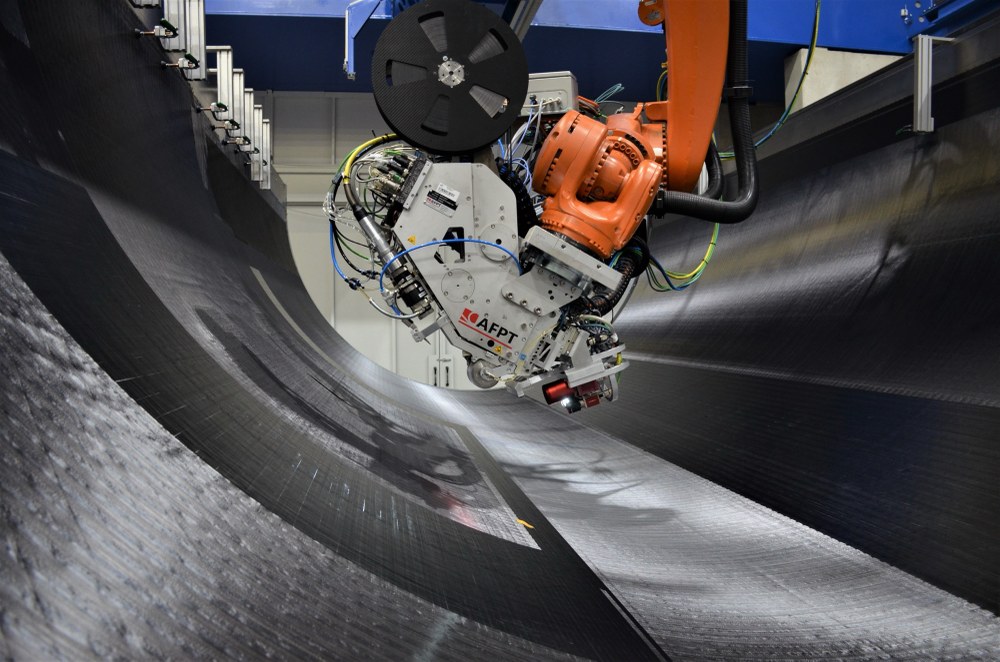Thermoplastic technologies

DLR
ZLP Augsburg plays a pioneering role in the development and application of state-of-the-art materials for the aerospace industry, particularly in the field of thermoplastic fibre composite technologies. These innovative materials offer a multitude of advantages and open up new possibilities for the design and manufacture of aircraft and spacecraft.
Advantages of thermoplastic fibre composite technologies:
- Weight reduction and structural efficiency: Thermoplastic fibre composites offer high strength at low weight, which leads to a significant reduction in the weight of aerospace systems. This enables improved performance parameters such as higher payloads, longer ranges and better fuel efficiency.
- Fast manufacturing processes: Processing thermoplastic fibre composites, e.g. using thermoforming, is more efficient and faster compared to traditional composite materials. In the in-situ Automated Fibre Placement process (AFPisc), the thermoplastic material is consolidated directly during deposition, creating the finished component and eliminating the need for a further process step. This results in reduced production times and significant cost saving potential.
- Reusability and repairability: Thermoplastic materials are reusable and can be remoulded, repaired and recycled by applying heat if required. This reduces the total cost of ownership and contributes to sustainability.
- Improved design flexibility: Thermoplastic materials offer a high degree of mouldability, enabling the production of complex geometries and the integration of functions during the manufacturing process. This leads to optimised structures and systems.
- Weldability: An outstanding advantage of thermoplastic fibre composites is their weldability. Various welding processes such as resistance or ultrasonic welding can be used to reliably join components and structures made of thermoplastic materials and enable the production of large, form-fit structures with high strength.
The aim of research is to optimise and continuously improve these advantages. New processing techniques, material combinations and design approaches are being developed to maximise the performance and versatility of thermoplastic fibre composites for the specific requirements of the aerospace industry.
This continuous innovation is actively helping to shape the future of aerospace by developing advanced technologies for the production of aircraft and spacecraft that are more powerful, lighter and more cost-efficient. Thermoplastic fibre composite technologies are seen as key to achieving these goals and are setting new standards for state-of-the-art aerospace technology.
